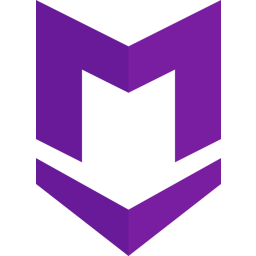
ChatGPT has been an amazing tool. I use it to clean up transcripts, write blog posts, and generate ideas. However, one of the limitations that I’ve dealt with is the Markdown language it uses. I wanted a quicker way to reformat the text. I discovered some solutions I want to share with you.
The Problem I Am Trying to Solve
When I grab the rich text from chatGPT, it contains some background code. I’ve had to manually reformat the Markdown language, at least until recently. I just finished reading a book called The Markdown Guide by Matthew Cone. In that book, he provided some tool recommendations. These tools have helped me with my issue.
Markdown Language Example
Let’s start with Markdown language before diving into two of the tools. It uses hashtags for marking headers, asterisks for bold and italics, and various codes. This is a wonderful tool for using a text editor and creating lists, marking headers, and more. You can use it to write projects like blog posts or book chapters. Here’s an example:
# Markdown Example
## Introduction
Markdown is a lightweight markup language with plain-text formatting syntax. It is designed to be converted to HTML and many other formats using a tool by the same name.
## Features
- **Simple Syntax**: Markdown's syntax is easy to learn and remember.
- **Platform Independent**: Markdown can be used in any text editor or platform.
- **Versatile**: Supports elements like headers, lists, links, images, etc.
- **Readability**: Markdown files remain readable even without rendering.
## Examples
### Headers
```markdown
# Header 1
## Header 2
### Header 3
```
### Lists
- Item 1
- Item 2
- Subitem 2.1
- Subitem 2.2
### Links and Images
[OpenAI](https://www.openai.com)

### BlockQuotes
> Markdown is a fantastic tool for writing.
Here is the same content rendered as rich text.
Markdown Example
Introduction
Markdown is a lightweight markup language with plain-text formatting syntax. It is designed so that it can be converted to HTML and many other formats using a tool by the same name.
Features
- Simple Syntax: Markdown’s syntax is easy to learn and remember.
- Platform Independent: Markdown can be used in any text editor or platform.
- Versatile: Supports various elements like headers, lists, links, images, and more.
- Readability: Markdown files remain readable even without rendering.
Examples
Headers
# Header 1
## Header 2
### Header 3
Lists
- Item 1
- Item 2
- Subitem 2.1
- Subitem 2.2
Links and Images
BlockQuotes
Markdown is a fantastic tool for writing.
Reformatting the markdown is kind of a hassle. Before, I would copy and paste it as plain text, then clean it up and format it. But I am always looking for an easier way. I knew there were probably some tools out there. Matt Cone introduced me to a tool called Dillinger.io
Dillinger.io
Dillinger.io allows you to paste your Markdown language into it, preview it as rich text, switch to HTML view, and make adjustments.

You can edit in Markdown, make changes, and save it as a .md file. Dillinger allows you to preview as HTML, Markdown, PDF, etc.
You can export it as HTML, PDF, or a Markdown file. I’m finding value in saving these as Markdown files. I’m starting to get more comfortable with the Markdown language. You can save to Dropbox, GitHub, Medium, Google Drive, and OneDrive. Additionally, you can import from those locations as Markdown or HTML files.
It’s straightforward: drop in your code, get rich text, and use it in your projects.
Notepad++
Reading Matt Cone’s book got me thinking. A tool I use extensively is called Notepad++. After digging around, I found it could format Markdown language using color codes, but it didn’t have a native way to view files in rich text and reformat them. After additional research, I found the Markdown Viewer Plus Plus plugin for Notepad++.

It adds a toolbar tool to view Markdown as rich text. I noticed that it does not handle images well, and there are differences in how it displays rich text compared to Dillinger.
With Markdown Viewer ++, you can export to HTML and PDF. You can also print from the rich text display or copy HTML to the clipboard.
Notepad++ can also save natively as .md files. To do this, switch the file type to “All Types,” add the .md extension, and save.
Both tools convert Markdown language into rich text, which I can copy into Scrivener or use for a blog. This has helped with productivity.



